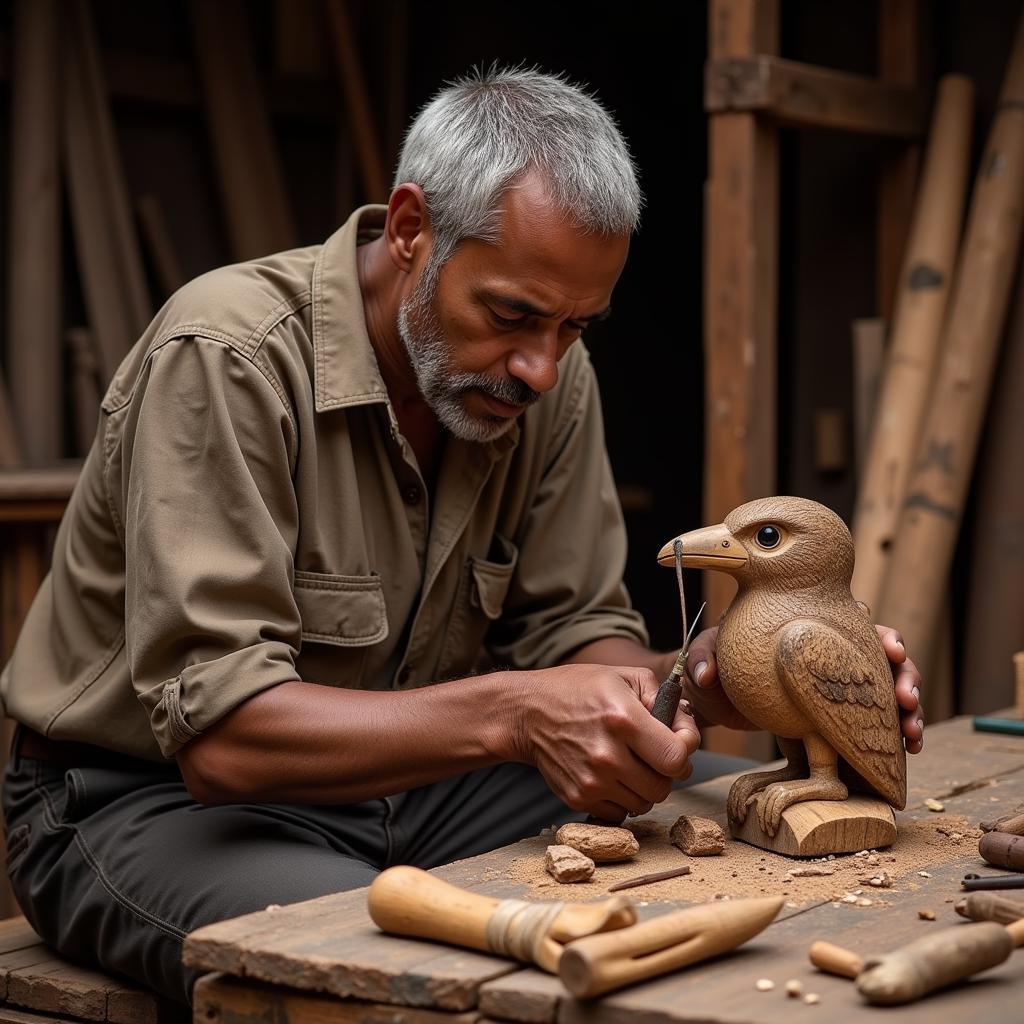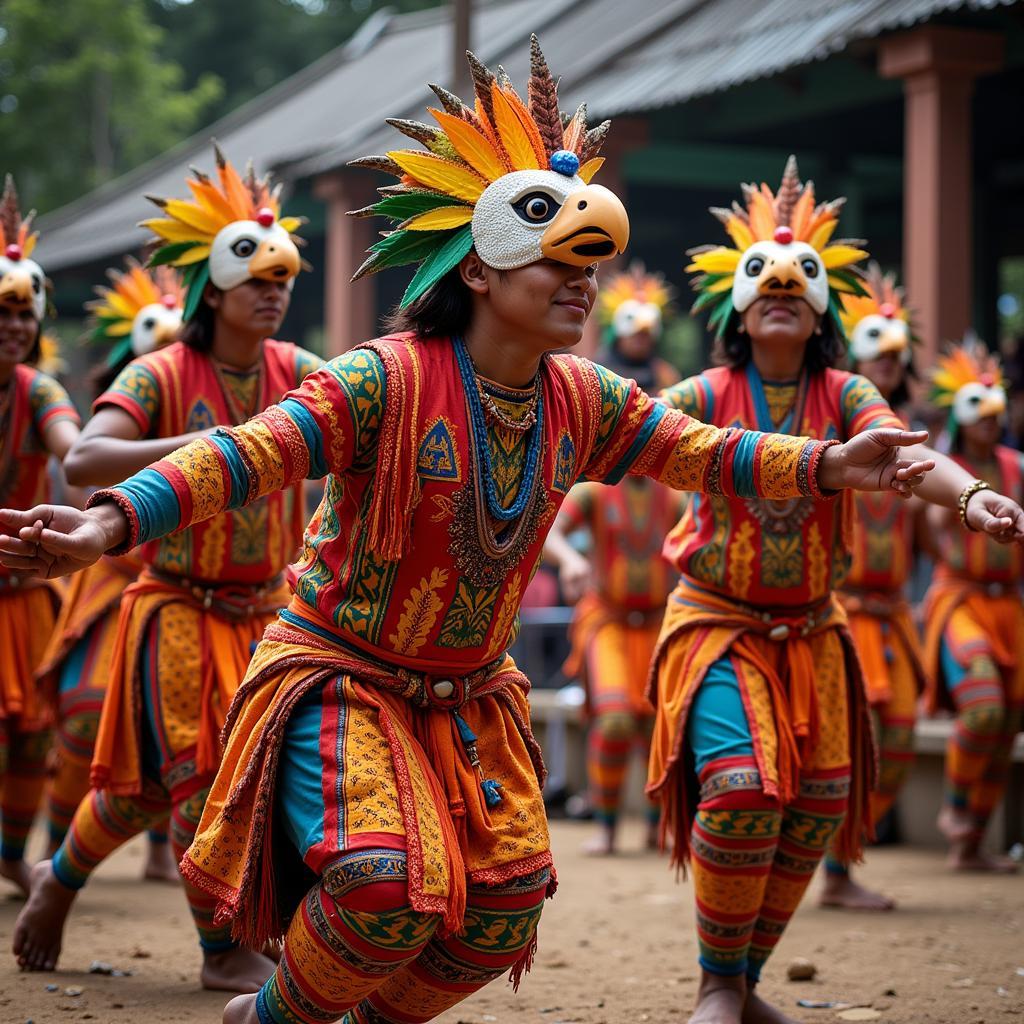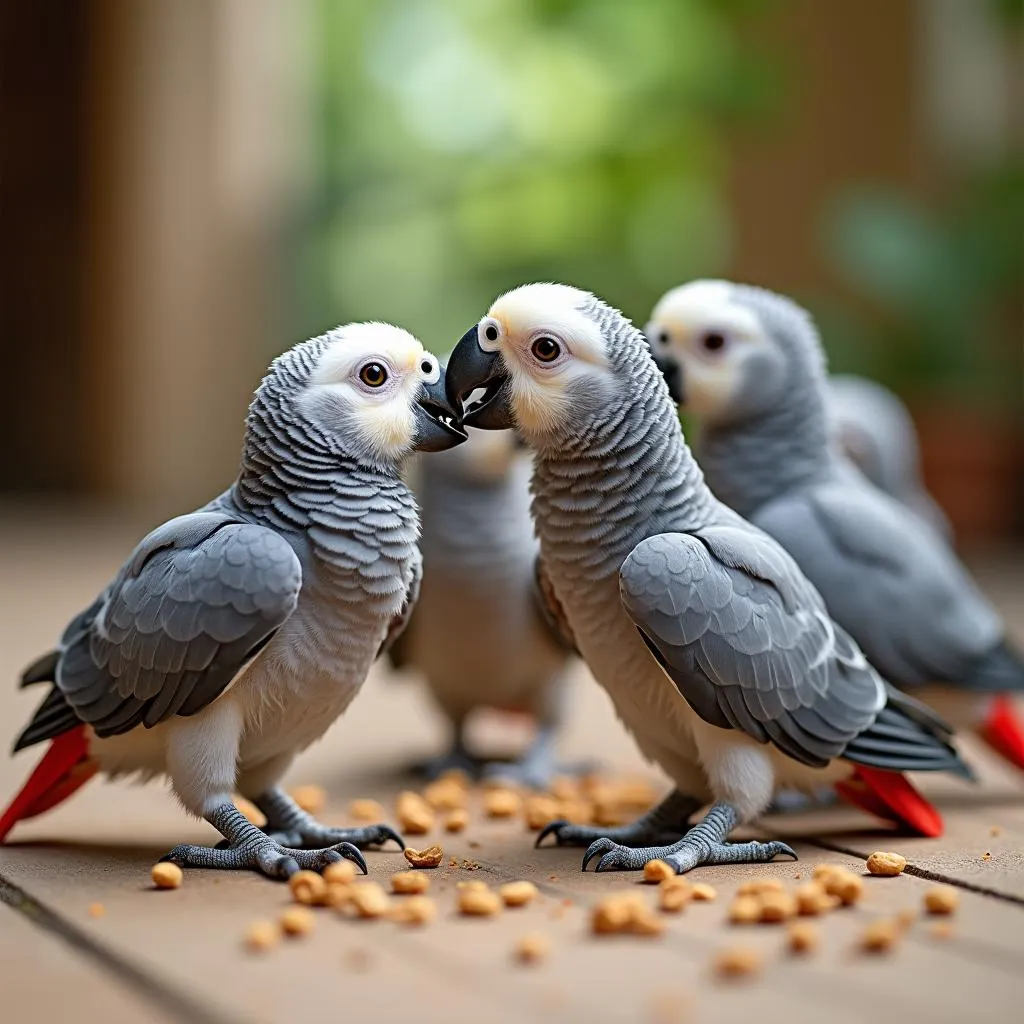The Allure of the African Bird Mask: Symbolism, Craftsmanship, and Cultural Significance
The African Bird Mask, a captivating art form steeped in tradition, offers a glimpse into the rich cultural tapestry of the continent. More than just decorative pieces, these masks embody spiritual beliefs, social structures, and ancient rituals, reflecting the deep connection between humans and nature in African societies.
Unmasking the Symbolism: Birds as Powerful Emissaries
In many African cultures, birds are revered as messengers between the physical and spiritual realms. Their ability to soar through the air, connecting heaven and earth, has led to their association with divine power, wisdom, and ancestral spirits. This profound symbolism is beautifully articulated in the intricate designs and craftsmanship of African bird masks.
For instance, the majestic eagle, often depicted with piercing eyes and a powerful beak, represents strength, leadership, and clear vision. The African fish eagle drawing, a common motif in West African art, exemplifies this symbolism, embodying the qualities of a wise and respected leader. Conversely, the owl, with its nocturnal nature and association with darkness, might symbolize wisdom, mystery, or even the ability to navigate the spirit world.
Beyond Aesthetics: The Role of Bird Masks in Rituals and Ceremonies
African bird masks are not merely static objects of art; they come alive during ceremonies and rituals, embodying the spirits they represent. Dancers, adorned in elaborate costumes and masks, transform into these powerful entities, communicating with ancestors, appeasing deities, or ensuring a bountiful harvest.
The masks, often accompanied by music, dance, and storytelling, become a conduit for cultural transmission, passing down traditions, values, and beliefs from one generation to the next. For example, in some cultures, young initiates may wear bird masks during coming-of-age ceremonies, signifying their transition into adulthood and their newfound responsibilities within the community.
A Symphony of Craftsmanship: Materials and Techniques
The creation of an African bird mask is a meticulous process, often passed down through generations of skilled artisans. Each mask is imbued with cultural significance and artistic ingenuity, reflecting the unique traditions of the specific region or ethnic group.
Wood is a common material, chosen for its durability and versatility, but masks can also be crafted from a diverse array of materials, including:
- Metals: Bronze, copper, and brass are often used for their lustrous beauty and ability to capture intricate details.
- Textiles: Raffia, cotton, and other fibers can be woven, embroidered, or applied to create texture and visual interest.
- Natural Elements: Feathers, beads, shells, and even animal horns can be incorporated to enhance the mask’s visual impact and symbolic meaning.
 An artisan carving an African bird mask
An artisan carving an African bird mask
The techniques employed are equally diverse, ranging from intricate carving and delicate painting to elaborate beadwork and featherwork. The specific styles and motifs vary significantly between regions, reflecting the distinct artistic traditions and cultural beliefs of each group.
“The true beauty of an African bird mask lies not only in its visual appeal but also in the stories it whispers, the traditions it upholds, and the connection it fosters between the human and the divine,” explains Dr. Abena Owusu, a renowned scholar of African art at the University of Ghana.
Exploring the Diversity of African Bird Masks
From the grasslands of the Sahel to the rainforests of Central Africa, the continent boasts a stunning array of bird mask traditions. Each region has developed its own unique styles, materials, and symbolic interpretations, resulting in a breathtaking diversity of forms.
- Baule Masks (Côte d’Ivoire): Known for their elegant, elongated forms and intricate details, Baule masks often depict hornbills, which symbolize wisdom and spiritual guidance.
- Senufo Masks (Mali): Characterized by their abstract, geometric designs and vibrant colors, Senufo bird masks often represent mythical creatures that embody both bird and human characteristics.
- Igboo Masks (Nigeria): Often used in masquerades and festivals, Igboo bird masks are known for their elaborate headdresses and colorful costumes, with birds like the eagle and the African green bee eater playing prominent roles.
 Dancers wearing African bird masks in a ceremonial performance
Dancers wearing African bird masks in a ceremonial performance
The Enduring Legacy of African Bird Masks
Today, African bird masks continue to captivate art enthusiasts and cultural aficionados worldwide. They are displayed in museums, collected by private individuals, and celebrated for their artistic merit, cultural significance, and enduring power to connect us to the rich heritage of Africa. These masks serve as a poignant reminder of the profound relationship between humans and nature, the importance of cultural heritage, and the power of art to transcend borders and connect us to something greater than ourselves.
FAQs About African Bird Masks
1. What is the purpose of an African bird mask?
African bird masks serve multiple purposes, primarily in rituals and ceremonies. They represent spirits, ancestors, or deities and are used in dances, performances, and celebrations to connect with the spiritual realm, convey cultural values, and mark important life events.
2. What are some common birds represented in African masks?
Eagles, hawks, owls, parrots, hornbills, and African giraffe mask are some of the common birds depicted in African masks, each carrying specific symbolic meanings within different cultures.
3. How are African bird masks made?
African bird masks are crafted using various materials like wood, metal, textiles, and natural elements. Techniques include carving, painting, beading, featherwork, and more, showcasing the diverse artistic skills of different ethnic groups.
4. Where can I see authentic African bird masks?
You can find authentic African bird masks in museums worldwide with dedicated African art collections, reputable art galleries specializing in African art, and occasionally, through ethical and sustainable sources that support traditional artisans.
5. Are African bird masks still used in ceremonies today?
Yes, many African communities continue to use bird masks in traditional ceremonies and rituals, ensuring the preservation of their cultural heritage and the passing down of knowledge to younger generations.
Further Exploration
- Explore the fascinating world of African masks beyond bird representations. Discover the symbolism and artistry of African ibis vessel and their role in ancient rituals.
- Delve deeper into the captivating world of African raptors and compare the majesty of the African crowned eagle vs harpy eagle.
Need Help? Contact Us
For inquiries or assistance in exploring the captivating world of African art and culture, contact us at:
Phone: +255768904061
Email: kaka.mag@gmail.com
Address: Mbarali DC Mawindi, Kangaga, Tanzania
Our dedicated team is available 24/7 to assist you.



